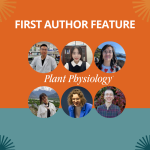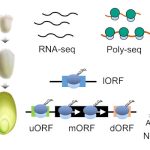The Future of Education: Addressing Plant Blindness to Confront Global Challenges
We are currently being confronted with a multitude of global challenges encompassing critical issues such as climate change, pollution, conservation efforts, and public health concerns. Given the gravity of these issues, it is crucial to be well-informed in order to make responsible decisions for the future to mitigate environmental challenges. However, despite the urgency, plant blindness remains a pervasive problem in education curricula as it hinders our ability to fully comprehend and appreciate the role of plants in mitigating climate change and pollution, and appreciating the key role of plants in human research and pharmaceuticals.
Plant blindness refers to the inability to recognize plants, comprehend their ecological significance, and accurately identify and describe plant biology concepts (Wandersee and Schussler, 2001; Wandersee and Schussler, 1999). Plant blindness has significant detrimental implications for addressing global problems, particularly when plant biology concepts are not being taught and properly evaluated in the classroom. Plant blindness has been recognized as a phenomenon with various dimensions (Predera et al., 2021; Amprazis and Papadopoulou, 2020), encompassing deficiencies in plant-related learning outcomes, the inability to grasp the concept of biodiversity (Predera et al., 2021), as well as other societal, cultural and educational factors. To effectively address this ‘deeply rooted’ issue a combination of long-term activities and a well-designed education curriculum must work hand in hand (Predera et al., 2021).
To combat plant blindness in education curricula, the American Society of Plant Biologists (ASPB) has formulated the 12 principles of Plant Biology to appreciate the roles of plants in our surroundings. ASPB’s education and outreach resources aim to eradicate plant blindness by promoting scholarly teaching, active learning, effective mentoring, and evidence-based public engagement. By embracing these 12 principles in education curricula and by fostering efforts both within and outside the classroom, we can take a significant step forward in comprehending the importance of plants as we confront global challenges.
The 12 principles of Plant Biology, as outlined by ASPB, are as follows:
- Plants use the same biological processes and biochemistry as microbes and animals. Yet plants are unique because they mix the sunlight’s energy with chemicals for growth. This process of photosynthesis makes the world’s supply of food and energy.
- Plants require certain inorganic elements from soil for growth. Plants play an essential role in the circulation of these nutrients within the biosphere.
- Land plants evolved from ocean-dwelling, algae-like ancestors, and plants have played a role in the evolution of life, including the addition of oxygen and ozone to the atmosphere.
- Reproduction in flowering plants takes place sexually, resulting in the production of a seed. Reproduction can also occur via asexual propagation.
- Plants, like animals and many microbes, respire and utilize energy to grow and reproduce.
- Cell walls provide structural support for the plant and also provide fibers and building materials for humans, insects, birds and many other organisms.
- Plants exhibit diversity in size and shape ranging from single cells to giant trees; there are ~350,000 plant species.
- Plants are a primary source of fiber, medicines, and countless other important products in everyday use.
- Plants, like animals, are subject to injury and death due to infectious diseases caused by microorganisms. Plants have unique ways to defend themselves against pests and diseases.
- Water is the major molecule in plant cells and organs. It’s essential to plant structure, growth, and the internal circulation of organic molecules and salts.
- Plant growth and development are under the control of hormones and can be affected by external signals such as light, gravity, touch or environmental stresses.
- Plants live in and adapt to a wide variety of environments. Plants provide diverse habitats for birds, beneficial insects and other wildlife in ecosystems.
For more resources on how to integrate plant biology concepts into the classroom, Plantae education includes activities for K-12 classrooms, learning objectives and core concepts for undergraduate curricula, a plant biology course framework, peer-reviewed research-based content that can be integrated into classes, among other resources that can be explored through the Plantae website.
Citations
- Amprazis, Alexandros, and Penelope Papadopoulou. 2020. “Plant Blindness: A Faddish Research Interest or a Substantive Impediment to Achieve Sustainable Development Goals?” Environmental Education Research 26 (8): 1065–87.
- Pedrera, Oier, Unai Ortega-Lasuen, Aritz Ruiz-González, José Ramón Díez, and Oihana Barrutia. 2023. “Branches of Plant Blindness and Their Relationship with Biodiversity Conceptualisation among Secondary Students.” Journal of Biological Education 57 (3): 566–91.
- Wandersee, James H., and Elisabeth E. Schussler. “Toward a Theory of Plant Blindness.” Plant Science Bulletin. 47 (1): 2‒9.
- Wandersee, James H., and Elisabeth E. Schussler. 1999. “Preventing Plant Blindness.” The American Biology Teacher 61 (2): 82–86.
Sources
- https://aspb.org/education-outreach/
- https://aspb.org/education-outreach/k12-roots-and-shoots/the-12-principles-of-plant-biology-2/#toggle-id-1
- https://plantae.org/education/
- https://aspb.org/wp-content/uploads/2016/05/ASPB-BSA-CoreConcepts.pdf
- https://qubeshub.org/community/groups/coursesource/courses/plant-biology
- https://academic.oup.com/plcell/pages/teaching-tools-plant-biology
______________________________________________
About the Author
Alice Pierce is PhD student at University of California, Davis, and a 2023 Plantae Fellow. She is researching the effects of stimulatory introns on gene architecture and chromatin biology. Alice is interested in bringing more visibility to the plant sciences, and bridging the intersection between science, science communication and art. You can find her on Twitter at @alicevpierce.



